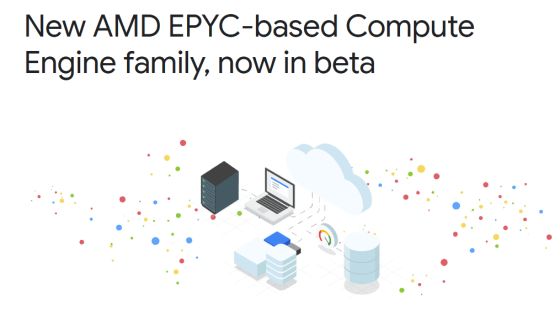Experts highly acclaimed the launch of AMD server processor 'EPYC Rome' as 'historic'

AMD announced the second generation (codename: Rome) of EPYC, a processor for servers and data centers. Rome was scheduled to be released in 2019 as the
AMD EPYC ™ 7002 Series Processors | AMD
https://www.amd.com/en/processors/epyc-7002-series
AMD EPYC Rome Officially Launched: 7nm High-Performance Server Line
https://wccftech.com/amd-epyc-rome-7nm-server-cpu-official-launch-64-core-128-thread-128-pcie-gen4/

AMD's second-generation EPYC Rome processor, which AMD has officially announced, is a product that appeared as the successor to the first-generation EPYC Naples processor released in 2017. The base 7nm ZEN2 core technology has a 15% improvement in performance per clock compared to the Naples base ZEN core technology. It also supports 64 cores and 128 threads, providing higher efficiency and higher performance. The
Rob Endard , an analyst who has participated in AMD presentations many times, wrote an article on eWEEK , `` Message so far AMD is 'performance similar to Intel, not so high' '' But this year is totally different, while Intel has stumbled, AMD has taken the lead role in data center products. ”
AMD Posing Major Challenge to Intel for Server Leadership-eWEEK
https://www.eweek.com/servers/amd-posing-major-challenge-to-intel-for-server-leadership
Anandtech's Johann de Geras, who has been watching AMD ’s server processor Opteron since 2003, says, “When it was Opteron, Intel products were three times faster, so Opteron There was no option to buy it. ”
AMD Rome Second Generation EPYC Review: 2x 64-core Benchmarked
https://www.anandtech.com/show/14694/amd-rome-epyc-2nd-gen/
In the Opteron era, AMD's market share for servers and data center products was 0%. But now the situation has changed and Rome has been adopted by Google's data center. This is the first time that Google has officially approved the use of AMD processors. Also, Twitter and others have decided to adopt Rome.
Google's VP Engineering Bart Sano says it is the first to deploy Rome on its production datacenter. Why? 'High core count, high perf shared memory, pcie4 for our accelerators.' Available in GCP later with the 'largest VMs ever and for HPC. ' #AMDEPYCHorizon pic.twitter.com/dnLfhrGkpc
— Patrick Moorhead (@PatrickMoorhead) August 7, 2019
At the Rome release event, Hewlett-Packard, Twitter, Dell, VMWare, and supercomputer manufacturers Cray, Lenovo, Microsoft, and Google were on stage after keynote speeches by AMD CEO Lisa Sue. Mr. Endard has pointed out that he has never seen support from such a large third party and shows how much support Intel has lost.
Geras also praised, “The release of the second generation EPYC processor is nothing but historical. “AMD expects to double its server market share by the second quarter of 2020,” commented other industry analysts.
Intel expects to bring 7nm process products to market in 2021, but it's important to see if AMD can take an effective measure ahead of it.
Related Posts:
in Hardware, Posted by logc_nt







